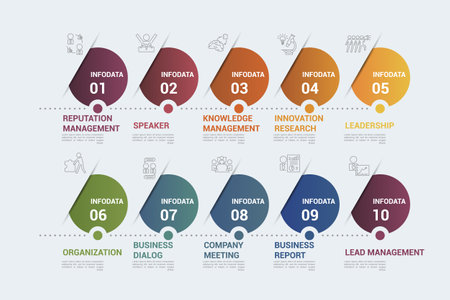1. What Are Heading Tags and Why They Matter
When it comes to organizing content on a webpage, heading tags play a key role. These HTML elements—ranging from <h1> to <h6>—help structure your content in a way thats easy for both users and search engines to understand. Think of heading tags as the titles and subtitles in a book. They break up your content into clear, digestible sections.
What Are Heading Tags?
Heading tags are HTML elements that define headings in your content. There are six levels of headings:
| Tag | Purpose | Best Use Case |
|---|---|---|
<h1> |
Main title of the page | Used once per page for the primary topic |
<h2> |
Major section headings | Breaks down key areas under the main title |
<h3> |
Sub-sections under H2s | Dives deeper into specific points within a section |
<h4> |
Details under H3s | Further breakdown of sub-points if needed |
<h5> |
Minor supporting points | Seldom used, but helpful for complex content structures |
<h6> |
The lowest level heading tag | Rarely used; only for deeply nested info |
Why Are Heading Tags Important?
Heading tags serve two major purposes: enhancing user experience and improving SEO.
User Experience (UX)
Well-structured heading tags make it easier for visitors to scan and understand your content. People often skim webpages rather than reading every word, so using clear headings helps them find what they’re looking for quickly.
Search Engine Optimization (SEO)
Search engines like Google use heading tags to understand the hierarchy and relevance of your content. Proper use of headings can improve how your page ranks in search results by signaling which topics are most important.
Tips for Using Heading Tags Effectively
- Use only one
<h1>tag per page—it should represent the main topic. - Follow a logical order: don’t skip from
<h2>to<h4>. - Include relevant keywords naturally in headings.
- Avoid stuffing headings with keywords—keep them readable.
- Make sure your headings reflect the structure and flow of your content.
Understanding and applying heading tags correctly is one of the simplest yet most powerful ways to boost both readability and SEO performance on your website.
2. How to Use H1 Tags Effectively
When it comes to on-page SEO, the H1 tag plays a key role in telling both users and search engines what your page is all about. Its usually the main headline you see at the top of a webpage and should be written with both clarity and strategy in mind.
Why the H1 Tag Matters
The H1 tag is more than just a big bold title. It’s one of the first elements search engine crawlers look at to understand your page content. A well-optimized H1 helps improve your visibility in search results and gives visitors immediate context when they land on your site.
Best Practices for Writing an SEO-Friendly H1
Follow these simple guidelines to create effective H1 tags that are optimized for both users and search engines:
| Best Practice | Description |
|---|---|
| Use Only One H1 Tag Per Page | This keeps the structure clear and avoids confusing search engines. |
| Include Your Primary Keyword | Place your main keyword naturally in the H1 to signal relevance. |
| Keep It Clear and Descriptive | Your H1 should accurately reflect the page’s topic so users know what to expect. |
| Make It Engaging | A compelling headline can increase click-through rates and keep visitors interested. |
| Avoid Stuffing Keywords | Overusing keywords makes your headline sound unnatural and may hurt rankings. |
Common Mistakes to Avoid
Even experienced marketers sometimes make errors with their H1 tags. Here are some pitfalls to steer clear of:
Using Multiple H1 Tags
This can confuse search engines about the main focus of your page. Stick with one H1 per page for better clarity and structure.
Generic or Vague Headlines
An H1 like “Welcome” or “Home” doesn’t tell users or search engines anything useful. Be specific and informative.
Missing Target Keywords
If you skip adding relevant keywords, youre missing a chance to show up in search results for those terms.
Too Long or Complicated Phrasing
Your headline should be easy to read at a glance. Try to keep it under 60 characters if possible.
Quick Tips for Writing Better H1 Tags
- Think Like a User: What would someone type into Google to find this page?
- Avoid Duplicate H1s: Each page should have a unique headline that matches its content.
- Match Page Intent: Make sure your H1 aligns with what users are expecting from the page title or meta description.
- Use Natural Language: Write headlines that sound human, not robotic.
The H1 tag sets the tone for everything else on your webpage. By using it wisely, you help both users and search engines understand exactly what you’re offering—and why it matters.

3. Proper Hierarchy: Using H2 to H6 for Clear Structure
Creating a clear and logical structure with heading tags is essential for both search engines and your readers. Using subheadings like H2 through H6 helps organize your content in a way that makes it easy to scan, understand, and navigate. Let’s break down how to use these headings properly.
Why Heading Hierarchy Matters
Search engines like Google use heading tags to understand the layout and main topics of a page. When your headings follow a clear hierarchy, it signals that your content is well-structured. For readers, headings make it easier to skim the page and find the information they need quickly.
How to Use Each Heading Level
Below is a simple guide on how to use H2 through H6 tags effectively:
| Heading Tag | Purpose | Best Use Case |
|---|---|---|
| H2 | Main sections of your article | Used to introduce each major topic or chapter |
| H3 | Subsections under an H2 | Dives deeper into specific points within a section |
| H4 | Details under an H3 topic | Adds supporting information or examples |
| H5 | Niche details under an H4 | Breaks down complex ideas even further when needed |
| H6 | The smallest level of detail | Rarely used, but helpful for deeply nested info |
A Practical Example of Heading Structure
If youre writing a blog post about “10 Tips for Better Sleep,” your heading structure might look like this:
H1: 10 Tips for Better Sleep H2: Create a Consistent Sleep Schedule H3: Why Consistency Matters H3: How to Set Your Schedule H2: Optimize Your Sleep Environment H3: Keep Your Room Cool and Dark H4: Best Temperature Range for Sleeping H4: Light-Blocking Solutions H3: Reduce Noise Distractions H2: Avoid Stimulants Before Bed H3: Foods and Drinks to Skip H3: Healthy Alternatives
User Experience and SEO Benefits
A well-structured article doesn’t just help users—it also boosts SEO. Search engines can better crawl and index your content when its logically organized. Plus, using relevant keywords in your headings can improve relevance and visibility in search results.
User Benefits:
- Easier scanning and navigation of content
- A better reading experience overall
- The ability to jump directly to sections they care about (especially when paired with a table of contents)
SEO Benefits:
- Improved crawlability for search engines
- Enhanced understanding of content structure and topic relevance
- The opportunity to rank for featured snippets or answer boxes when headings match user queries
The key takeaway is simple: use heading tags purposefully. Start with an H1 for your title (used only once per page), then build your structure naturally using H2 through H6 as needed. This approach not only makes your content easier to read but also improves its SEO potential.
4. Common Heading Tag Mistakes That Hurt SEO
Using heading tags correctly can boost your on-page SEO, but when used the wrong way, they can actually hurt your site’s performance in search engines. Let’s break down some of the most common heading tag mistakes and how to fix them.
Multiple H1 Tags
Your page should only have one <h1> tag. This tag is meant to represent the main topic of the page, and using more than one can confuse both users and search engines about what your content is really about.
Why It’s a Problem:
- Search engines may not know which H1 is the true focus of the page.
- It disrupts the logical structure of your content.
How to Fix It:
- Use only one
<h1>per page, typically for the page title. - Use
<h2>,<h3>, and so on for subheadings based on their importance.
Skipping Heading Levels
Heading tags should follow a logical order (H1 → H2 → H3). Skipping levels, like jumping from an H2 straight to an H4, can make your content structure confusing for both readers and search engines.
Why It’s a Problem:
- Makes it harder for screen readers and accessibility tools to understand your content hierarchy.
- Can signal poor organization to search engines.
How to Fix It:
- Follow a sequential order: don’t skip heading levels unless absolutely necessary.
- If you’re going deeper into a subtopic, go from H2 to H3, then H4, and so on.
Keyword Stuffing in Headings
While it’s good to include keywords in your headings, overloading them with too many keywords (a practice known as keyword stuffing) can be harmful.
Why It’s a Problem:
- Makes your headings sound unnatural or spammy.
- Can lead to penalties from search engines for trying to manipulate rankings.
How to Fix It:
- Use keywords naturally and sparingly in your headings.
- Aim to write headings that are helpful and informative first—then optimize with keywords if it makes sense.
Quick Reference Table: Heading Tag Mistakes & Fixes
| Mistake | Description | Fix |
|---|---|---|
| Multiple H1 Tags | More than one H1 on a single page | Limit each page to one clear and descriptive H1 tag |
| Skipping Heading Levels | Jumping from H2 to H4 or beyond without proper order | Use headings in a logical sequence (H1 → H2 → H3) |
| Keyword Stuffing | Packing headings with too many keywords | Add keywords naturally without forcing them into every heading |
Avoiding these common mistakes will help improve your site’s readability, user experience, and SEO performance. Stick to clear structure, natural language, and logical formatting when working with heading tags.
5. Optimizing Heading Tags for SEO and Accessibility
Using heading tags the right way can make a big difference in your on-page SEO and also help make your content easier to read—for both people and screen readers. In this section, we’ll go over how to use keywords naturally in headings, create skimmable content, and make sure your headings are accessible.
Use Keywords Naturally in Headings
Adding keywords to your headings helps search engines understand what your page is about. But it’s important to keep things natural. Don’t stuff keywords—use them where they make sense and sound good to your readers.
Tips for Natural Keyword Use
| Do | Dont |
|---|---|
| Include main keyword in H1 or H2 if possible | Repeat the same keyword in every heading |
| Use related terms and synonyms | Add keywords that don’t match the topic |
| Keep headings short and clear | Stuff headings with multiple keywords |
Make Content Easy to Skim
Most users don’t read every word—they scan pages for the info they need. Good heading structure helps guide them through your content quickly and easily.
How to Make Content Skimmable with Headings
- Break up long sections: Use H2s and H3s to split text into smaller chunks.
- Be descriptive: Your headings should clearly tell what the next section is about.
- Keep it consistent: Follow a logical order (H1, then H2, then H3) to avoid confusion.
Ensure Accessibility for Screen Readers
Heading tags aren’t just for SEO—they help people using assistive technologies too. Screen readers rely on proper heading structure to navigate a webpage effectively.
Best Practices for Accessible Headings
- Use only one H1 per page: This should be your page title and appear at the top.
- Avoid skipping levels: Don’t jump from an H2 directly to an H4—keep the order logical.
- Avoid using headings just for style: If you want bigger or bolder text, use CSS instead of misusing heading tags.
Example of Proper Heading Structure
<h1>Ultimate Guide to Heading Tags</h1> <h2>Why Headings Matter</h2> <h3>SEO Benefits</h3> <h3>User Experience Benefits</h3> <h2>Best Practices</h2> <h3>Keyword Placement</h3> <h3>Accessibility Tips</h3>By following these simple tips, you can improve both your site’s visibility on search engines and its usability for all visitors—including those using screen readers.

